Roller conservation in Upper-Kiskunság – Summary of 2019
This years’ field season has been full of hard work and closed with nice results again. We have monitored the condition of all nestboxes since autumn, cleaned, repaired or replaced them when it was necessary. Repaired nestboxes have been placed out again in early spring, and we also installed 30 new nestboxes where the breeding of Rollers is expected.
The season started slowly: the birds arrived with delay however more and more Roller started to breed by the first half of June. There has been several nestboxes where breeding took place in mid-June. This year the satellite-tagged adult called Eleven performed his 3rd winter journey successfully. The long-awaited bird arrived on May 18th, about 3 weeks later than the former year. This year we could not meet him in person either, we could not observe him despite the many attempts. Hopefully he starts his 4th journey to the South African wintering grounds soon. With this, Eleven remains the record-holder among the Hungarian satellite-tagged Rollers.
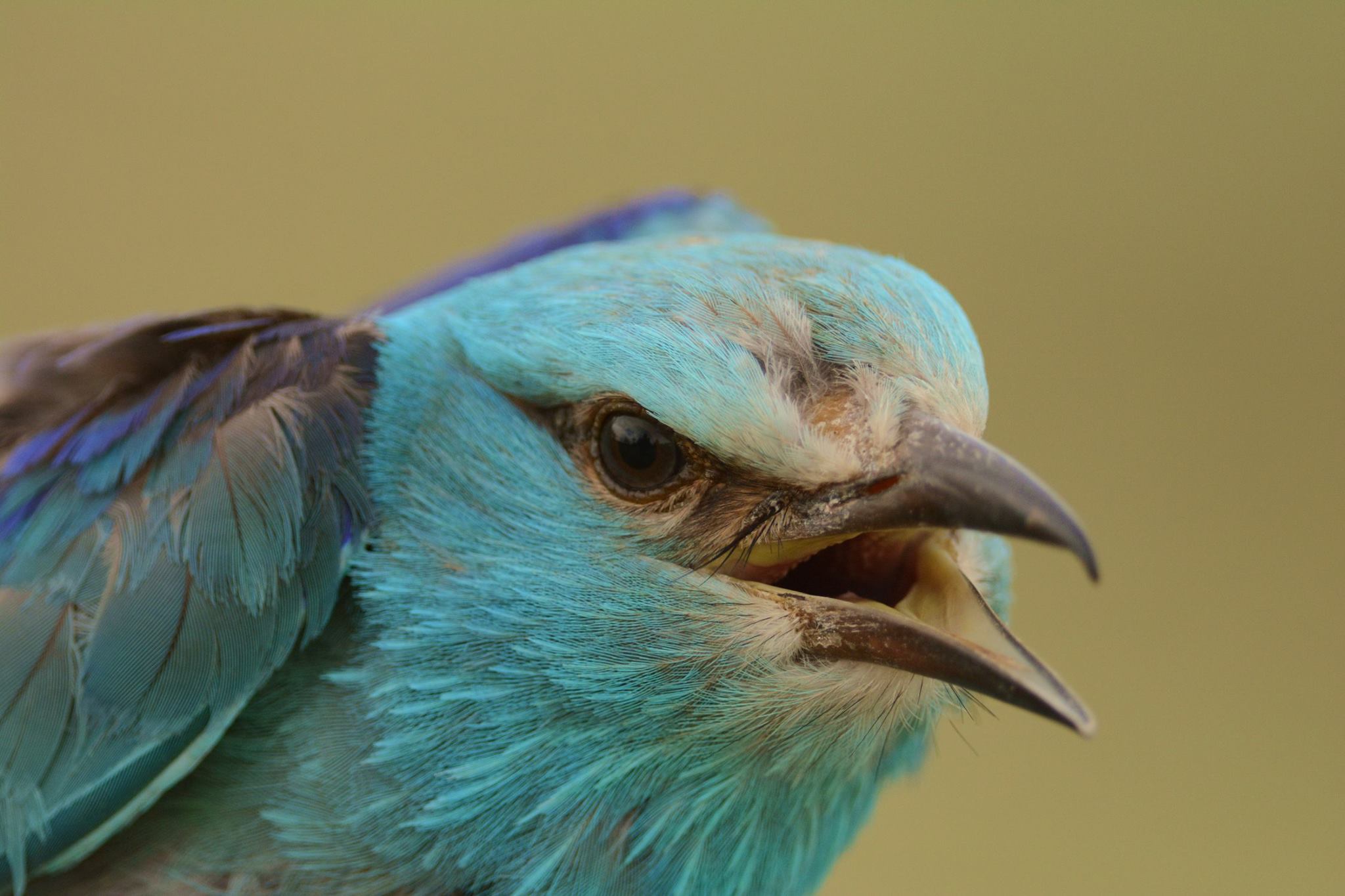
Adult Roller (Photo: Csaba Lendvai)
Nestbox monitoring and ringing of adult birds started in the beginning of June. We caught altogether 70 birds from which 32 earned new rings and 38 individuals have been relisted.
Season of chick ringing begun after June 20th, the breeding pairs were significantly late compared to previous years. Although, this is not a disadvantage for Rollers, they have plenty of time to prepare for the early autumn migration. They also happen to breed in the special, cigar-shaped nestboxes installed for Little owl, this year we recorded 3 cases. In 2019 we have also monitored the 50 nestboxes placed by Czech conservationists in Kunszentmiklós, Tatárszentgyörgy, Kunadacs, Kunbaracs, Kunpeszér, Ladánybene and Lajosmizse.
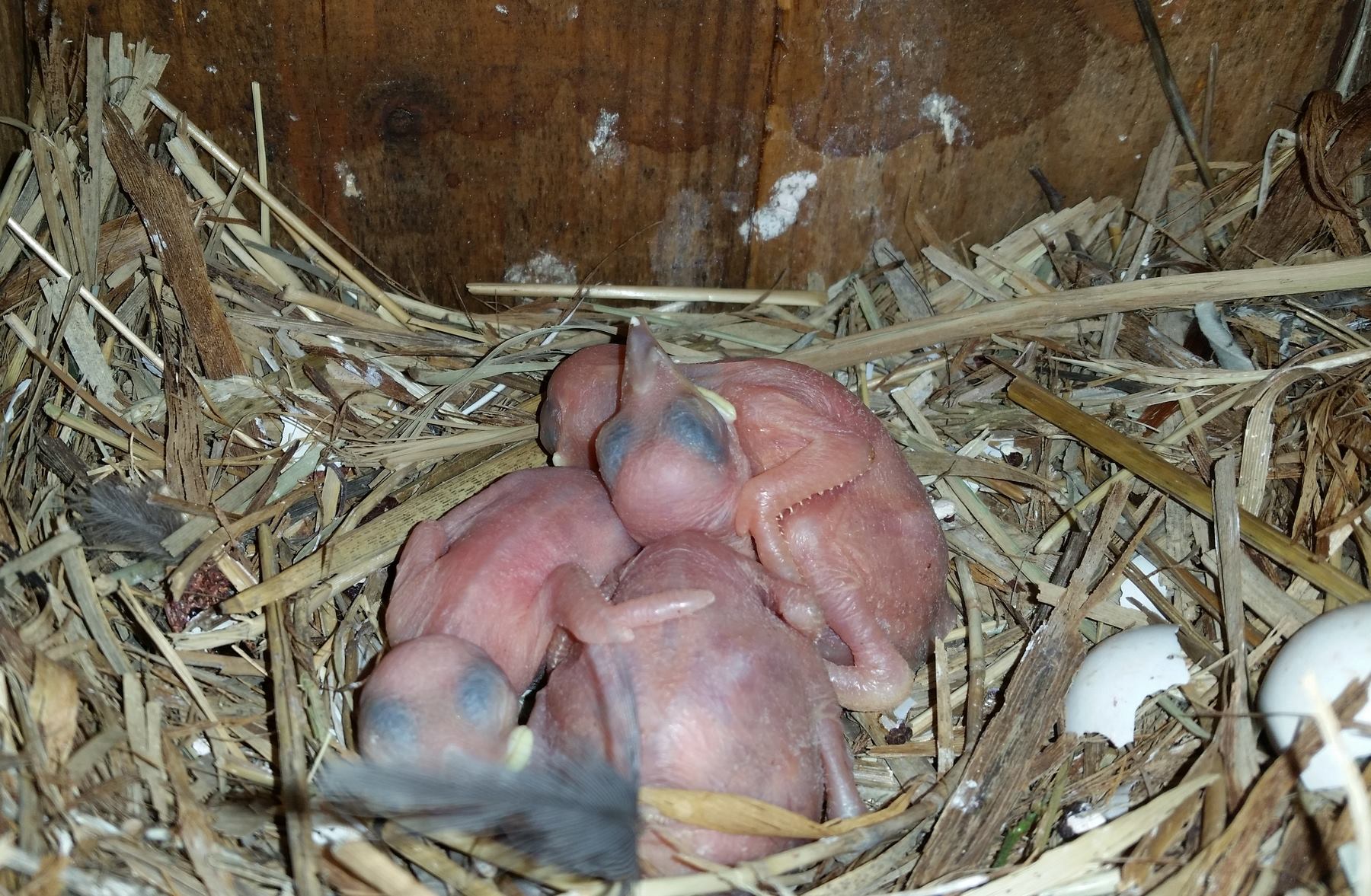
Freshly hatched chicks on dry nest material formerly collected by Starling (Photo: Csaba Lendvai)
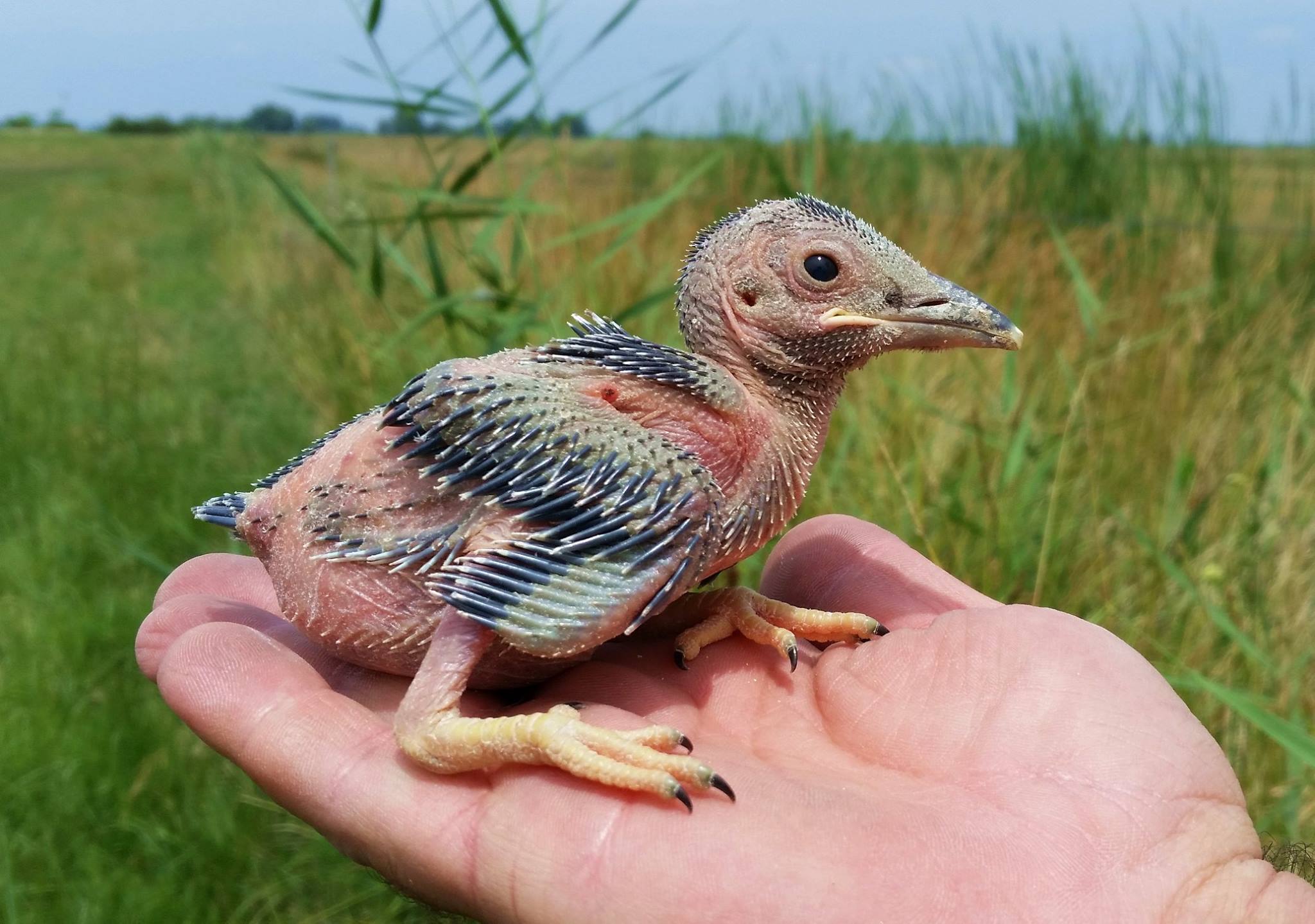
Roller chicks have closed spiny feather sheaths (Photo: Csaba Lendvai)
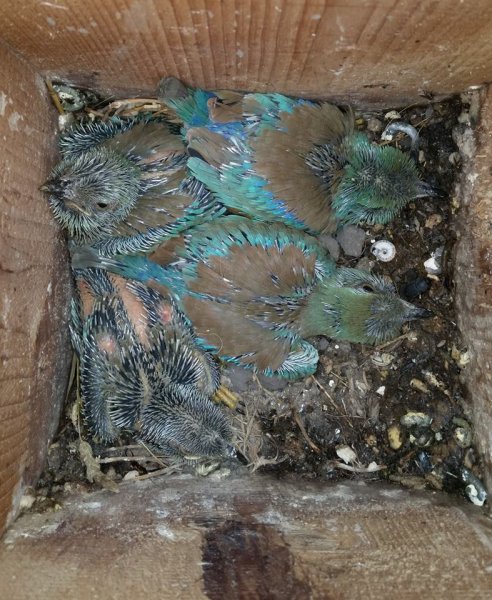
The chicks feathers unfurl from the opened sheaths (Photo: Csaba Lendvai)
We achieved the following results:
From the monitored nestboxes in our area we recorded 166 breeding pairs and an additional 3 pairs in the tubular nestboxes installed for Little Owl. So we know of the breeding of 169 Roller pairs in the artificial nestboxes, and we observed the breeding of an additional pair in natural cavity. Therefore the breeding population in the area* is altogether 170 pairs.
In the nestboxes we installed and maintain the breeding of 101 pairs have been recorded despite the 83 pairs in 2018 (we placed 30 additional nestboxes in 2019 where the breeding of 20 pairs were reported).
8 pairs were breeding in the nestboxes of Hungarian Little Owl Protecting Public Benefit Association (which are maintained by the Budapest local group of BirdLife Hungary since 2019).
In the monitored 50 nestboxes of the Czech conservationists 41 Roller breeding were recorded.
16 pairs were breeding in other type of nestboxes.
1 pair was observed in natural cavities.
3 pairs were breeding in the tubular Little Owl nestboxes maintained by Hungarian Little Owl Protection Association
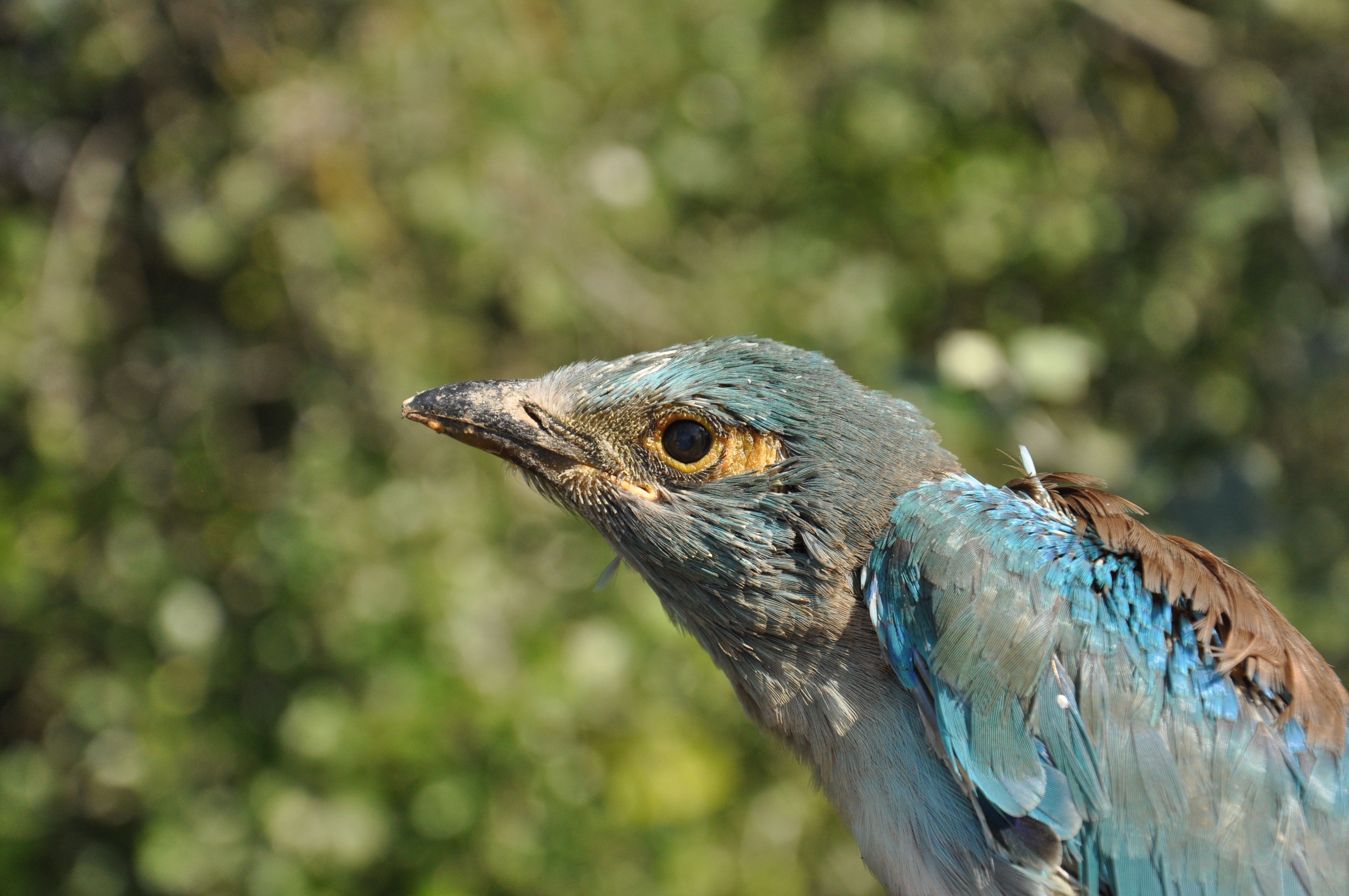
A developing nestling (Photo: Csaba Lendvai)

A clutch of 8 eggs (Photo: Csaba Lendvai)
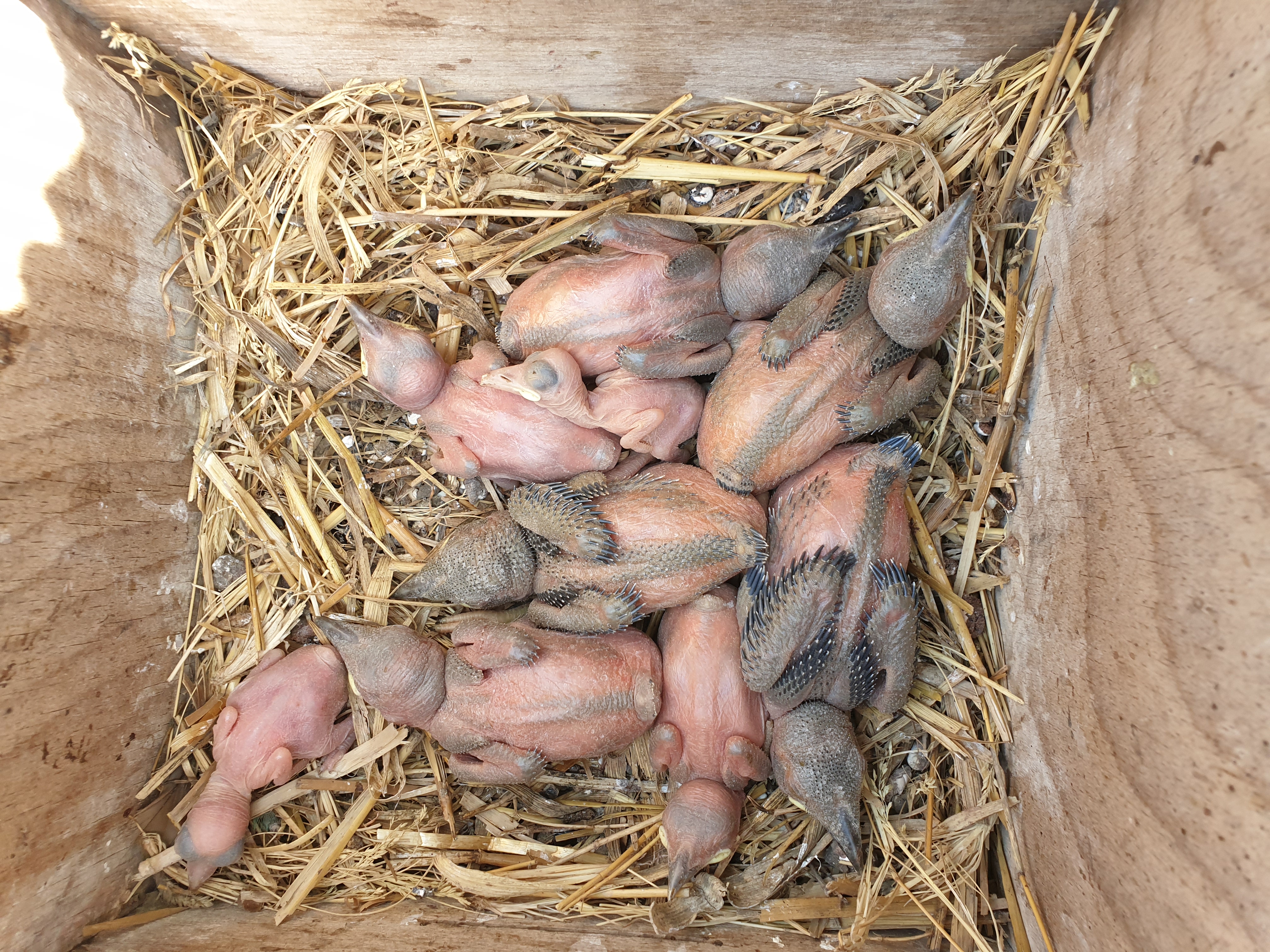
9 nestlings in a box (Photo: Csaba Lendvai)
During the nestbox monitoring we recorded the breeding of Scops owls as well, altogether 7 pairs have been found. These owls spend the winter in Africa and every year they occupy the D-type nestboxes installed for Roller in small numbers. We also find Little owls every year in the nestboxes, in 2019 we observed the breeding of 4 pairs. One of their breeding attempts failed because of bees. 9 nestboxes were occupied by Jackdaws in the neighbourhood of Dömsöd and Bugyi municipalities. Tree sparrows also occupied many nestboxes this year. 6 nestboxes have been taken by Honey bees, beekeepers moved them out successfully. Also Great tits have been breeding in 4 of our nestboxes.
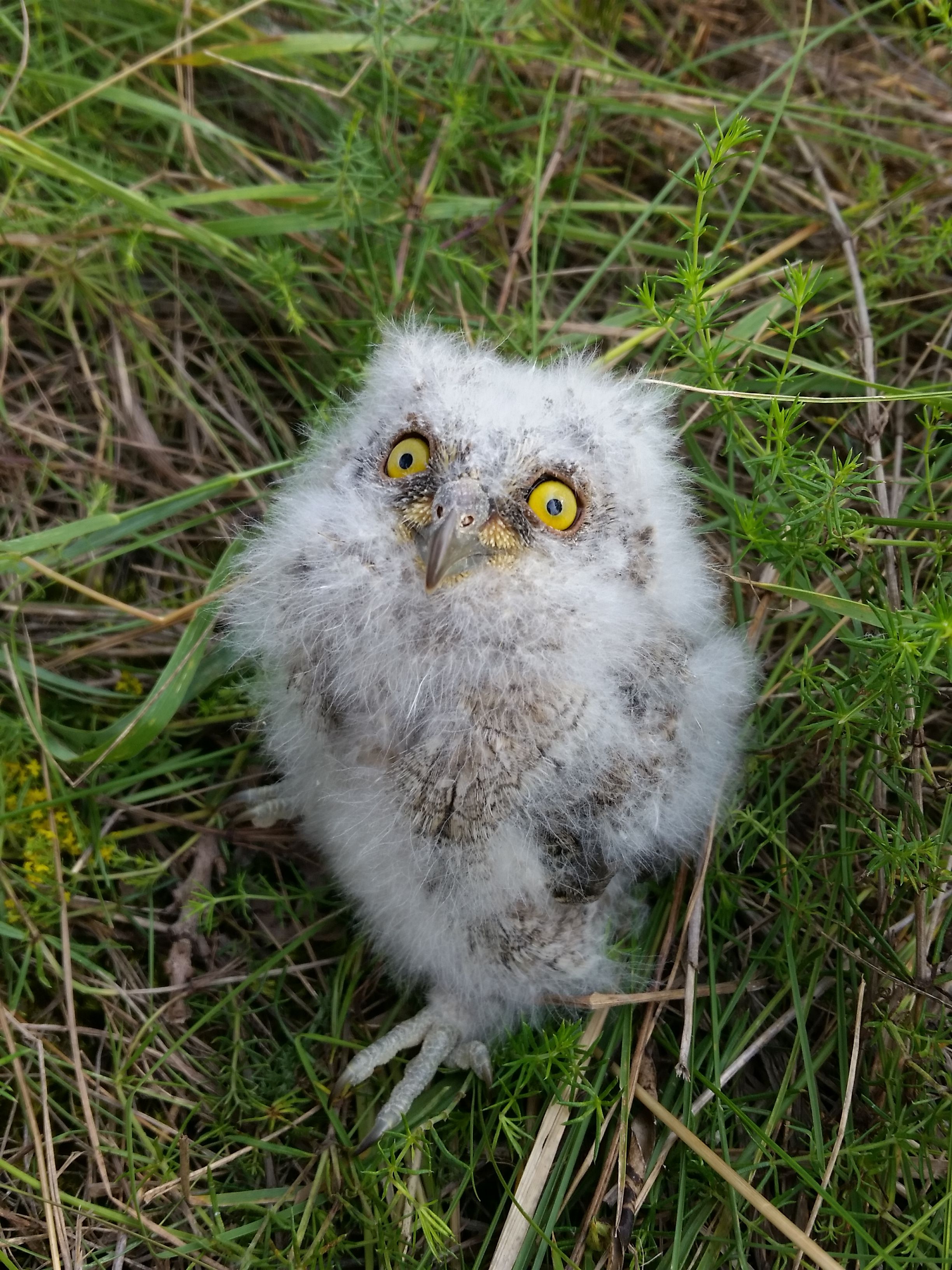
A fluffy Scops owl nestling (Photo: Csaba Lendvai)
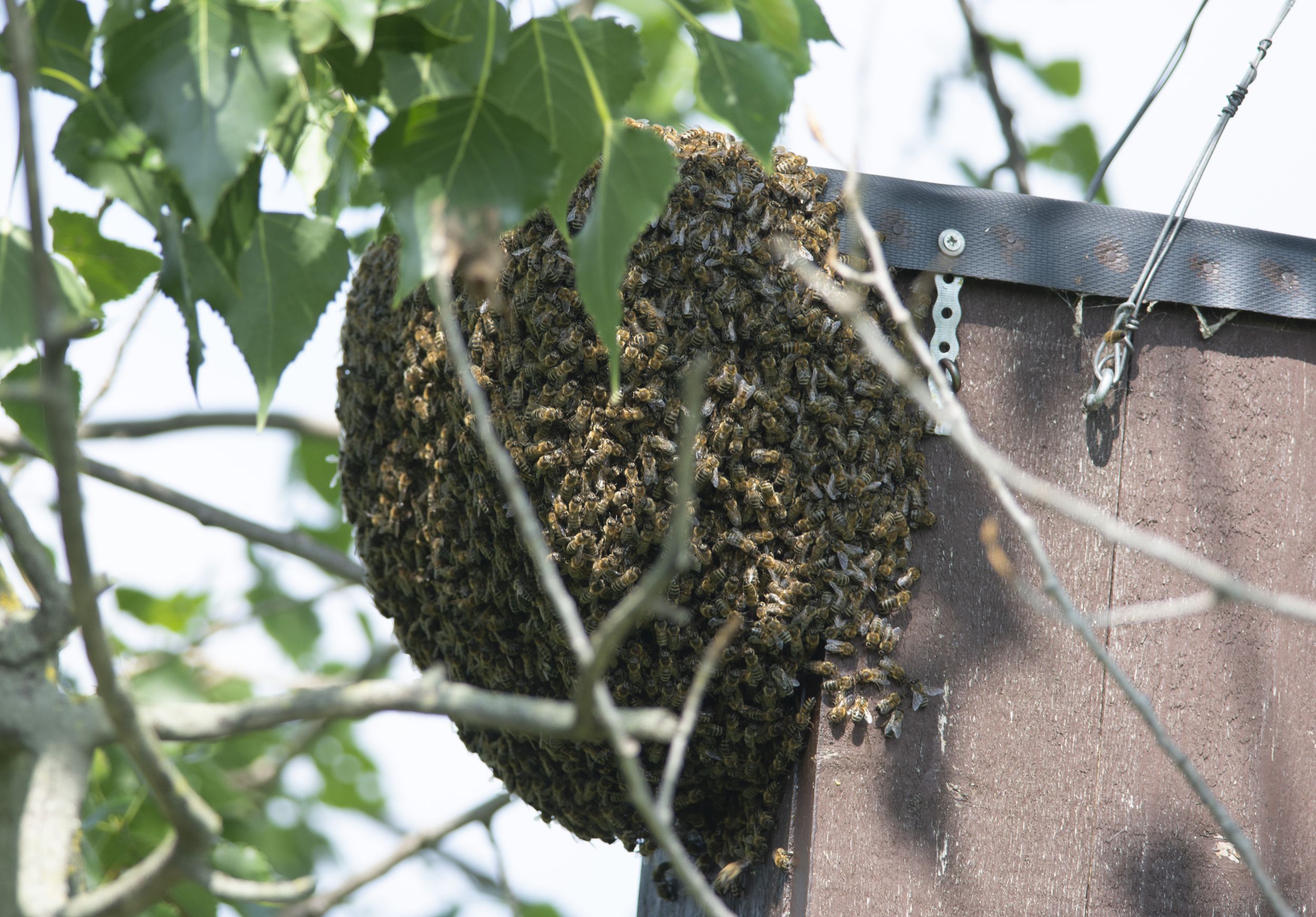
A nestbox occupied by bees (Photo: Csaba Lendvai)
We would like to express our gratitude for everybody who contributed to the hard work of this years’ field season, namely: László Szász, Attila K. Szabó, Imre Juhász, Imre Bárdos, Dávid Sarlós, Zsolt Karcza, Katalin Lukács, Péter Ócsai, András Meszlényi, Hunor Győrfy, Katalin Ozogány, Gábor Engyel, Zsigmond Nyáry, Róbert Kazi.
We would like to extend our sincere appreciation for all of the hard work and dedication provided by our volunteers.
We also would like to thank „1000 Odú Társaság” for the data provided.
The work was supported by the European Union LIFE+ project „Conservation of the European Roller in the Carpathian basin” (LIFE13/NAT/HU/000081).
*Bugyi, Kiskunlacháza, Apaj, Dömsöd, Kunpeszér, Kunszentmiklós, Bösztör (Szabadszállás), Tass, Szalkszentmárton, Tatárszentgyörgy, Dabas, Pusztavacs, Ladánybene, Kunbaracs, Kunadacs, Lajosmizse, Vecsés, Üllő, Csévharaszt, Monor, Vasad


















